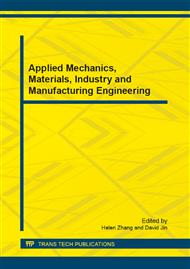p.81
p.85
p.89
p.93
p.97
p.103
p.107
p.111
p.115
Application of Fluorescent Aerosols to Verifying the Leakage of Protective Clothing by Image Processing
Abstract:
This work aims to measure the leakage of the personal protective equipment by using the fluorescent aerosol tracer. The fluorescent aerosols were employed as airborne particulates in a controlled chamber with ultraviolet (UV) light-detectable stickers. After an exposure and leakage test, the protective equipment was removed and photographed with UV-scanning to evaluate areas and color depth ratio of the areas where fluorescent aerosols had adhered to the body through the protective equipment. An image processor installed with an entropy-based algorithm was developed to segment the fluorescent area and calculate its relative leakage ratio (Lr) in real time. This study shows that the total leakage rate of the K brand protective clothing is 2.04 × 10-4 in two repetitions, and its 10- repetition total leakage rate is about 3.15×10-3. The two-repetition total leakage rate of the P brand protective clothing is about 2.47×10-4, and its 10 repetition total leakage rate is about 4.79×10-3. The two-repetition total leakage rate of the W brand protective clothing is about 1.04×10-4, and its 10-repetition total leakage rate is about 4.68×10-3.
Info:
Periodical:
Pages:
97-102
Citation:
Online since:
April 2012
Authors:
Keywords:
Price:
Сopyright:
© 2012 Trans Tech Publications Ltd. All Rights Reserved
Share:
Citation:


